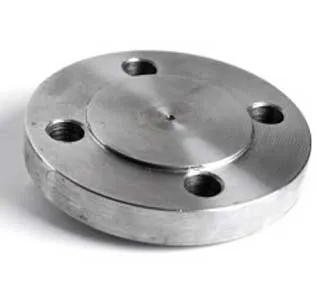-
Cangzhou Yulong Steel Co., Ltd.
-
Phone:
+86 13303177267 -
Email:
admin@ylsteelfittings.com
- English
- Arabic
- Italian
- Spanish
- Portuguese
- German
- kazakh
- Persian
- Greek
- French
- Russian
- Polish
- Thai
- Indonesian
- Vietnamese
- Zulu
- Korean
- Uzbek
- Hindi
- Serbian
- Malay
- Ukrainian
- Gujarati
- Haitian Creole
- hausa
- hawaiian
- Hebrew
- Miao
- Hungarian
- Icelandic
- igbo
- irish
- Japanese
- Javanese
- Kannada
- Khmer
- Rwandese
- Afrikaans
- Albanian
- Amharic
- Armenian
- Azerbaijani
- Basque
- Belarusian
- Bengali
- Bosnian
- Bulgarian
- Catalan
- Cebuano
- China
- China (Taiwan)
- Corsican
- Croatian
- Czech
- Danish
- Esperanto
- Estonian
- Finnish
- Frisian
- Galician
- Georgian
- Kurdish
- Kyrgyz
- Lao
- Latin
- Latvian
- Lithuanian
- Luxembourgish
- Macedonian
- Malgashi
- Malayalam
- Maltese
- Maori
- Marathi
- Mongolian
- Myanmar
- Nepali
- Norwegian
- Norwegian
- Occitan
- Pashto
- Dutch
- Punjabi
- Romanian
- Samoan
- Scottish Gaelic
- Sesotho
- Shona
- Sindhi
- Sinhala
- Slovak
- Slovenian
- Somali
- Sundanese
- Swahili
- Swedish
- Tagalog
- Tajik
- Tamil
- Tatar
- Telugu
- Turkish
- Turkmen
- Urdu
- Uighur
- Welsh
- Bantu
- Yiddish
- Yoruba

Dec . 05, 2024 16:47 Back to list
Exploring the Properties and Applications of Metal Tubes in Various Industries
The Versatility of Metal Tubes A Comprehensive Overview
Metal tubes are integral components in various industries, serving as key elements in construction, manufacturing, automotive, aerospace, and even medical applications. Their versatility, strength, and reliability have made them a preferred choice over other materials. In this article, we will explore the various types of metal tubes, their applications, manufacturing processes, and advantages.
Types of Metal Tubes
Metal tubes come in several forms, including seamless, welded, and extruded tubes, each suited for different applications.
1. Seamless Tubes These tubes are produced without any welded joints, making them ideal for high-pressure applications. They are manufactured by piercing round billets and then expanding them to the desired diameter. Seamless tubes are commonly made from steel, stainless steel, and other alloys.
2. Welded Tubes These are created by rolling metal strips into a cylindrical shape and welding the edges together. While they may not be as strong as seamless tubes, welded tubes are generally more cost-effective to produce and are widely used in structural applications.
3. Extruded Tubes This manufacturing method involves forcing metal through a die to produce a tube shape. Extruded tubes can be made from various materials, including aluminum and copper, and are known for their uniformity and precision.
Applications of Metal Tubes
The applications of metal tubes are vast and varied.
- Construction In the construction industry, metal tubes are used for structural support, framing, and plumbing systems. Steel tubes are particularly popular due to their strength and load-bearing capabilities.
- Automotive Metal tubes are critical in the automotive sector, used in exhaust systems, fuel lines, and structural components. Their ability to withstand high pressures and temperatures makes them suitable for such applications.
- Aerospace The aerospace industry demands materials that are lightweight yet strong. Aluminum and titanium tubes are commonly used in aircraft, contributing to overall fuel efficiency and performance.
metal tube

- Medical In the medical field, metal tubes are used in a variety of equipment, including catheters, syringes, and surgical instruments. The biocompatibility of stainless steel tubes is particularly important in these applications.
Manufacturing Processes
The manufacturing of metal tubes involves several processes, all of which are designed to ensure the highest quality and performance standards.
- Machining This process involves cutting the metal into the desired shape and size, followed by finishing processes to achieve smooth surfaces and precise dimensions.
- Annealing This heat treatment process alters the mechanical properties of metal, improving its ductility and reducing hardness. Annealing is essential for preventing brittleness in metal tubes.
- Galvanizing This protective coating process involves applying a layer of zinc to steel tubes, preventing corrosion and extending their lifespan. It is especially important in outdoor applications where exposure to the elements is a concern.
Advantages of Metal Tubes
The benefits of using metal tubes are numerous. Their inherent strength ensures durability, while their versatility allows for customization in terms of size, shape, and material. Additionally, metal tubes can withstand extreme temperatures and pressures, making them suitable for harsh environments.
Furthermore, metal tubes are recyclable, contributing to sustainability efforts in various industries. The ability to repurpose metal not only reduces waste but also conserves natural resources.
Conclusion
Metal tubes are indispensable in modern society, providing essential functions across numerous sectors. Their strength, versatility, and adaptability ensure that they will continue to play a critical role in future innovations. As technology advances, the manufacturing processes and applications of metal tubes are likely to evolve, further enhancing their importance in our daily lives. The continued development in materials science will also open new avenues for metal tube applications, ensuring their relevance in an ever-changing industrial landscape.
Latest news
-
ANSI 150P SS304 SO FLANGE
NewsFeb.14,2025
-
ASTM A333GR6 STEEL PIPE
NewsJan.20,2025
-
ANSI B16.5 WELDING NECK FLANGE
NewsJan.15,2026
-
ANSI B16.5 SLIP-ON FLANGE
NewsApr.19,2024
-
SABS 1123 FLANGE
NewsJan.15,2025
-
DIN86044 PLATE FLANGE
NewsApr.19,2024
-
DIN2527 BLIND FLANGE
NewsApr.12,2024
-
JIS B2311 Butt-Welding Fittings LR/SR 45°/90° /180°Seamless/Weld
NewsApr.23,2024











